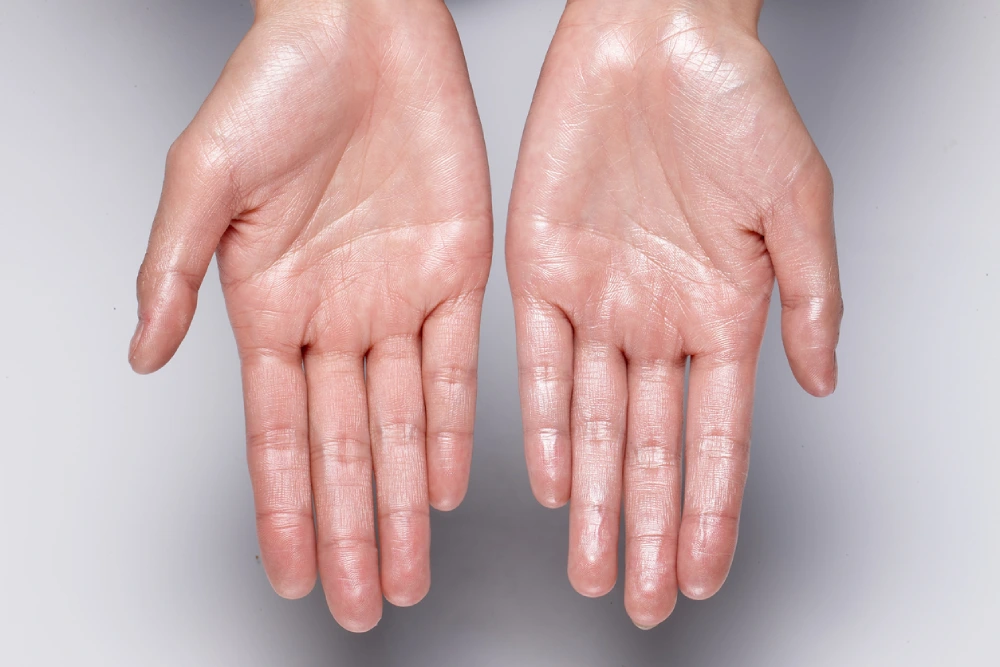
Living with hyperhidrosis can feel isolating and overwhelming. If you’re reading this, you likely understand the daily challenges of excessive sweating – the embarrassment of constantly damp clothes, the anxiety before social situations, and the frustration of trying countless remedies that promise relief but deliver disappointment. You’re not alone in this journey, and more importantly, you have options.
Hyperhidrosis affects millions of people worldwide, yet it remains a condition that many suffer through in silence. The good news is that medical science now offers a wide range of effective hyperhidrosis treatments, from simple lifestyle modifications to advanced surgical procedures, such as Endoscopic Thoracic Sympathectomy (ETS). This guide will walk you through every available treatment option, helping you understand your choices and make informed decisions about your care.
Understanding Hyperhidrosis: You’re Not Alone
Before diving into treatment options, it’s important to understand that hyperhidrosis is a legitimate medical condition, not a personal failing or lack of hygiene. Primary hyperhidrosis typically begins in childhood or adolescence and affects specific areas like the palms, feet, underarms, or face. Secondary hyperhidrosis, on the other hand, typically develops later in life and may be triggered by underlying medical conditions or certain medications.
The impact of hyperhidrosis extends far beyond physical discomfort. Many patients report feeling anxious in social situations, avoiding certain activities, or experiencing decreased quality of life. These feelings are valid, and seeking treatment is a positive step towards reclaiming your confidence and comfort.
Conservative Hyperhidrosis Treatment Options

Antiperspirants: Your First Line of Defense
The journey to managing hyperhidrosis often begins with clinical-strength antiperspirants. Unlike regular deodorants, medical-grade antiperspirants contain higher concentrations of aluminum chloride, which blocks sweat ducts more effectively.
How to Use Clinical Antiperspirants Effectively:
- Apply to completely dry skin before bedtime
- Allow the product to work overnight when sweat production is lowest
- In the morning, you can apply regular deodorant over the antiperspirant
- Be patient – it may take several weeks to see optimal results
- Consider prescription-strength options if over-the-counter products aren’t sufficient
There are numerous over-the-counter and prescription options available, each with different formulations tailored to specific needs. Many patients find success by rotating between different products to prevent skin irritation while maintaining effectiveness.
Lifestyle Modifications That Make a Difference
While lifestyle changes alone rarely cure hyperhidrosis, they can significantly complement other treatments and improve your overall comfort:
Clothing Choices:
- Opt for breathable, natural fabrics like cotton, linen, and bamboo
- Choose loose-fitting garments that allow air circulation
- Consider moisture-wicking athletic wear for active periods
- Keep spare clothing at work or school for emergency changes
- Invest in undershirts or dress shields to protect outer clothing
Dietary Considerations:
- Limit spicy foods, caffeine, and alcohol, which can trigger sweating
- Stay hydrated – contrary to popular belief, drinking water doesn’t increase sweating
- Consider keeping a food diary to identify personal triggers
- Maintain a healthy weight, as excess weight can exacerbate sweating
Stress Management
Since anxiety and stress can worsen hyperhidrosis symptoms, developing coping strategies is crucial:
- Practice deep breathing exercises or meditation
- Consider counseling or therapy to address anxiety related to sweating
- Regular exercise, while initially increasing sweat, can improve overall stress levels
- Join support groups or online communities for people with hyperhidrosis
Medical Hyperhidrosis Treatment Options
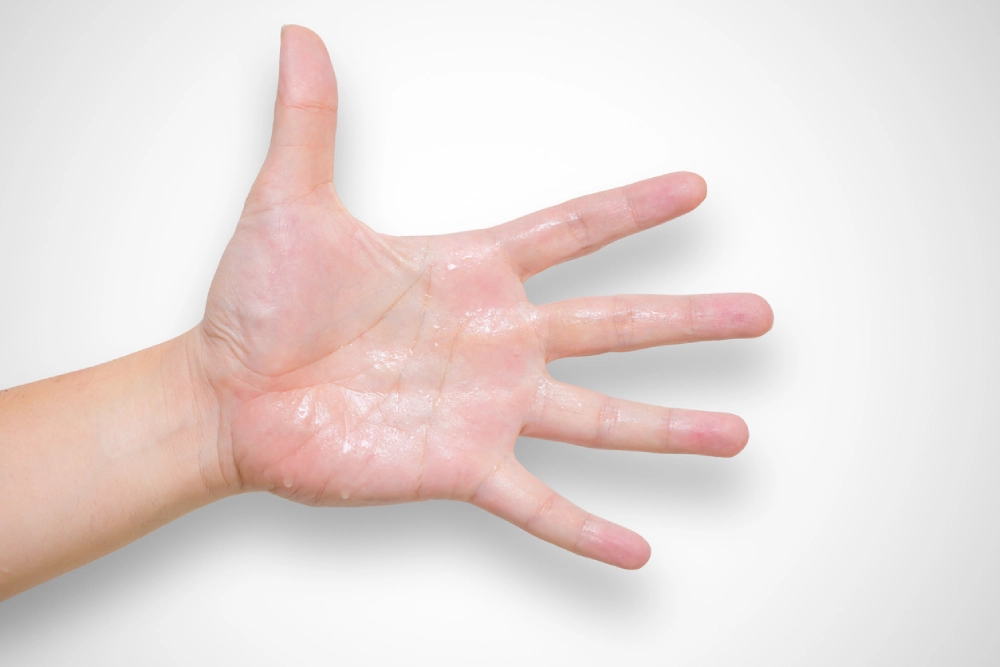
Iontophoresis: The Power of Electric Current
Iontophoresis represents a breakthrough for many hyperhidrosis sufferers, particularly those with palmar (hand) and plantar (foot) hyperhidrosis. This FDA-approved treatment uses a mild electrical current passed through water to temporarily disable sweat glands.
How Iontophoresis Works
The treatment involves placing hands or feet in shallow water baths connected to a device that generates a low-level electrical current. The exact mechanism isn’t fully understood, but it’s believed that the electrical current and minerals in the water work together to temporarily block sweat ducts.
Treatment Protocol:
- Initial phase: Daily 20-30 minute sessions for 1-2 weeks
- Maintenance phase: 1-3 sessions per week
- Results typically last 4-6 weeks between maintenance sessions
- Home devices are available, making long-term treatment convenient
Success Rates and Considerations
Studies show that iontophoresis is effective for 70-80% of patients with palmar and plantar hyperhidrosis. The treatment is generally well-tolerated, with minor skin irritation being the most common side effect. Several devices are available for home treatment, making long-term management more convenient.
Botulinum Toxin Injections: Precision Treatment
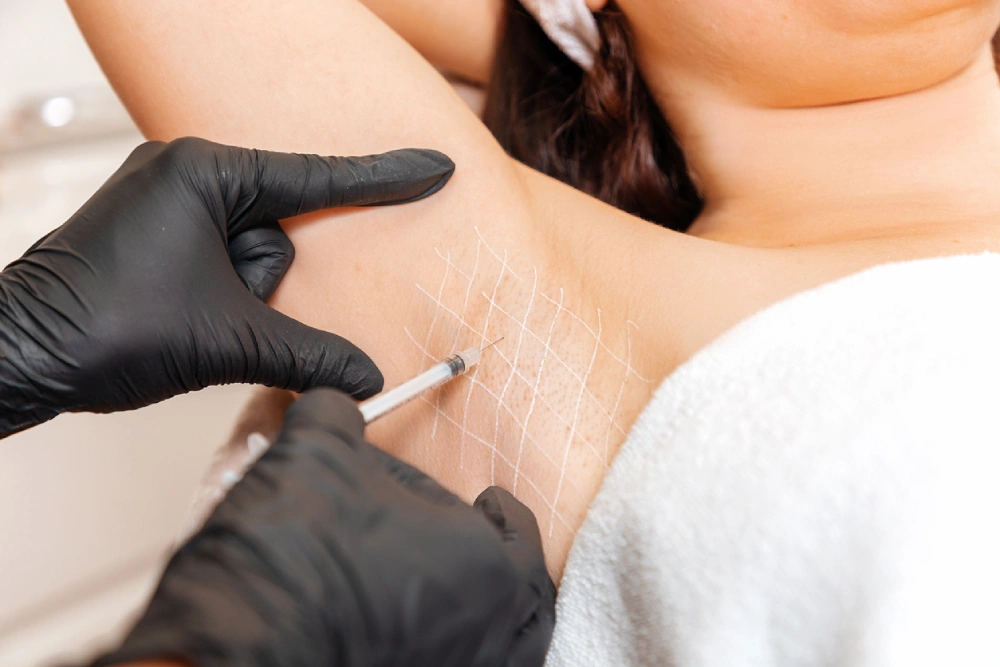
Botulinum toxin (commonly known by brand names like Botox, Dysport, and Xeomin) has revolutionised hyperhidrosis treatment by offering targeted relief for specific areas. This treatment works by blocking the nerve signals that stimulate sweat glands, effectively reducing sweat production in the treated area.
Areas Commonly Treated:
- Underarms (axillary hyperhidrosis) – most common and effective
- Palms and feet – effective but may cause temporary weakness
- Face and scalp – requires careful technique to avoid facial asymmetry
- Other localised areas, as determined by your physician
What to Expect During Treatment
The procedure typically takes 15-30 minutes, depending on the area being treated. For underarm treatment, multiple small injections are administered in a grid pattern across the affected area. A topical numbing cream may be applied beforehand to minimise discomfort.
Results and Duration:
- Effects typically begin within 2-7 days
- Peak effectiveness is reached at 2 weeks
- Results last 4-12 months, varying by individual and location
- Repeat treatments maintain effectiveness
- Studies show high success rates for treating underarm sweating with this method.
Cost Considerations
While this treatment can be costly, many insurance plans cover it when other options haven’t worked. The long-lasting results often make it cost-effective compared to constantly purchasing antiperspirants and replacing damaged clothing.
Oral Medications: Systemic Approaches
For patients with generalised hyperhidrosis or those who haven’t responded to topical treatments, oral medications may provide relief. These systemic hyperhidrosis treatments work throughout the body but require careful monitoring due to potential side effects.
Anticholinergic Medications:
- Glycopyrrolate (Robinul): Most commonly prescribed, blocks nerve signals to sweat glands
- Oxybutynin (Ditropan): Originally developed for bladder conditions, it shows promise for hyperhidrosis
- Propantheline: Less commonly used due to side effects
Side Effects to Consider:
- Dry mouth and eyes
- Constipation
- Drowsiness or dizziness
- Blurred vision
- Heat intolerance
Other Medication Options:
- Beta-blockers may help with stress-induced sweating
- Antidepressants can address both anxiety and hyperhidrosis symptoms
- Calcium channel blockers show promise in some patients
Your healthcare provider will work with you to find the right medication and dosage while monitoring for side effects and effectiveness.
Advanced Hyperhidrosis Treatment: Surgical Options
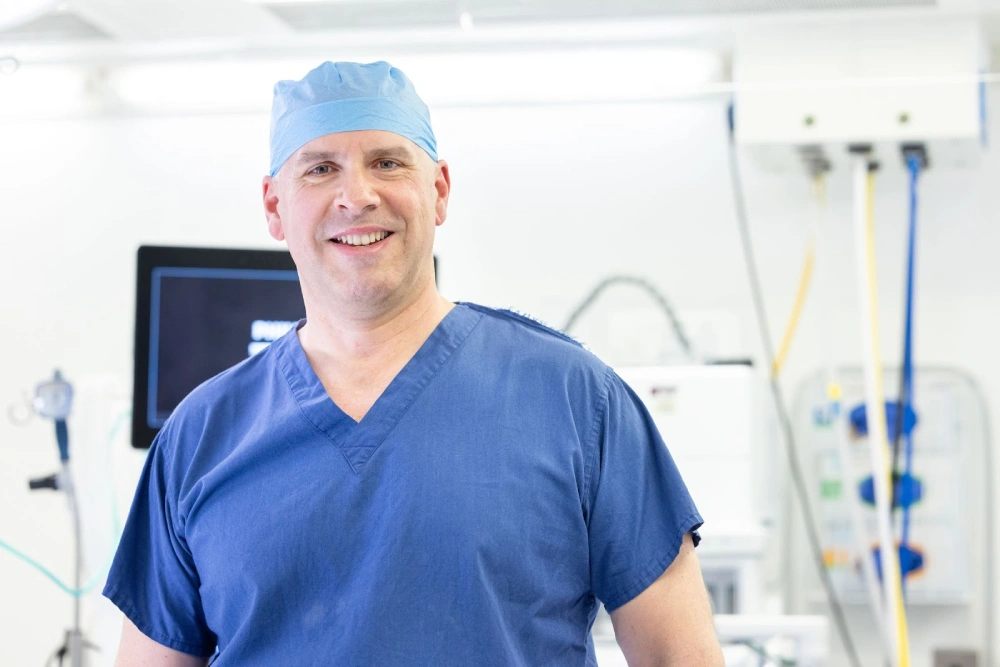
MiraDry: Non-Invasive Sweat Gland Destruction
MiraDry is a newer non-invasive treatment that targets sweat glands in the underarms. This FDA-approved treatment permanently destroys sweat glands in the underarm area, offering long-lasting results without surgery.
How MiraDry Works
The treatment uses precisely controlled microwave energy to heat and eliminate sweat glands while cooling and protecting the skin surface. The procedure is performed in the office under local anaesthesia.
Treatment Process:
- The underarm area is numbed with a local anaesthetic
- A specialised handpiece delivers controlled microwave energy
- Treatment takes approximately 60-90 minutes
- Most patients require 2-3 sessions spaced 3 months apart
Results and Recovery:
- Immediate reduction in sweating for most patients
- Continued improvement over 2-3 months
- Clinical studies show an average 82% reduction in underarm sweating
- Minimal downtime – most patients return to normal activities within a few days
- Permanent results, such as destroyed sweat glands, don’t regenerate
Considerations:
- Currently, it is only approved for underarm treatment (primary axillary hyperhidrosis)
- Temporary swelling and numbness are common
- Cost varies, but may be covered by insurance in some cases
- Long-term studies continue to demonstrate lasting effectiveness
Endoscopic Thoracic Sympathectomy (ETS): The Definitive Solution
For patients with severe hyperhidrosis who haven’t found relief through conservative treatments, Endoscopic Thoracic Sympathectomy (ETS) offers hope for a permanent solution. This minimally invasive surgical procedure has helped thousands of patients reclaim their lives from excessive sweating.
Understanding ETS Surgery
ETS involves interrupting the sympathetic nerve chain that controls sweating in specific areas of the body. The procedure is performed through tiny incisions using a small camera (endoscope) and specialised instruments, allowing surgeons to precisely target the problematic nerves.
Who Is a Candidate for ETS?
ETS is typically recommended for patients who:
- Have tried and failed conservative treatments
- Experience a severe impact on quality of life
- Have primary hyperhidrosis (not secondary to other conditions)
- Are in good overall health for surgery
- Have realistic expectations about outcomes and potential side effects
Types of ETS Procedures:
- T2 Sympathectomy: For facial and cranial hyperhidrosis
- T3 Sympathectomy: For palmar (hand) hyperhidrosis
- T4 Sympathectomy: For axillary (underarm) hyperhidrosis
- Combined procedures: For multiple affected areas
The ETS Surgical Process:
- Pre-operative Consultation: Thorough evaluation including medical history, physical examination, and discussion of risks and benefits
- Day of Surgery: Performed under general anaesthesia as an outpatient procedure
- The Procedure: Two small incisions (about 5mm each) are made under each arm
- Recovery: Most patients go home the same day with minimal pain
Success Rates and Outcomes
ETS surgery has shown high success rates in clinical studies.:
- Palmar hyperhidrosis: 95-98% success rate
- Axillary hyperhidrosis: 85-95% success rate
- Facial hyperhidrosis: 90-95% success rate
- Patient satisfaction rates consistently exceed 90%
Recovery and What to Expect:
- Most patients return to desk work within 2-3 days
- Physical activities can usually resume within 1-2 weeks
- Complete healing typically occurs within 4-6 weeks
- Immediate relief from sweating in treated areas
- Gradual improvement in the quality of life and confidence
Understanding Compensatory Sweating
The most significant consideration with ETS is compensatory hyperhidrosis – increased sweating in untreated areas of the body. This occurs in 60-90% of patients to varying degrees:
- Mild: Slight increase that doesn’t impact daily life
- Moderate: Noticeable but manageable with clothing choices
- Severe: Significant sweating that may require additional treatment
Advances in surgical technique and careful patient selection have helped reduce the risk of severe compensatory sweating, but it remains an important factor to discuss with your surgeon.
Long-term Outcomes
Studies following ETS patients for 5-10 years show:
- Sustained relief from original sweating problems
- High patient satisfaction rates
- Improved quality of life measurements
- Most patients would choose the surgery again
- Ongoing research into techniques to minimise compensatory sweating
Choosing the Right Treatment Path
Selecting the appropriate hyperhidrosis treatment requires careful consideration of multiple factors. Your journey should begin with a comprehensive evaluation by a healthcare provider experienced in treating hyperhidrosis.
Factors to Consider:
- Severity and location of sweating
- Impact on daily life and mental health
- Previous treatment attempts and results
- Age and overall health status
- Personal preferences regarding invasiveness
- Financial considerations and insurance coverage
Creating Your Treatment Plan
Most healthcare providers recommend a stepped approach:
- Conservative measures: Clinical antiperspirants, lifestyle modifications
- Non-invasive medical treatments: Iontophoresis, botulinum toxin injections
- Advanced non-surgical options: MiraDry, oral medications
- Surgical intervention: ETS for severe cases unresponsive to other treatments
Questions to Ask Your Healthcare Provider:
- What type of hyperhidrosis do I have?
- Which treatments are most appropriate for my specific situation?
- What are the expected success rates for each option?
- What are the potential risks and side effects?
- How much will treatment cost, and what does insurance cover?
- How long will the results last?
- What happens if the first treatment doesn’t work?
Living with Hyperhidrosis: Beyond Treatment
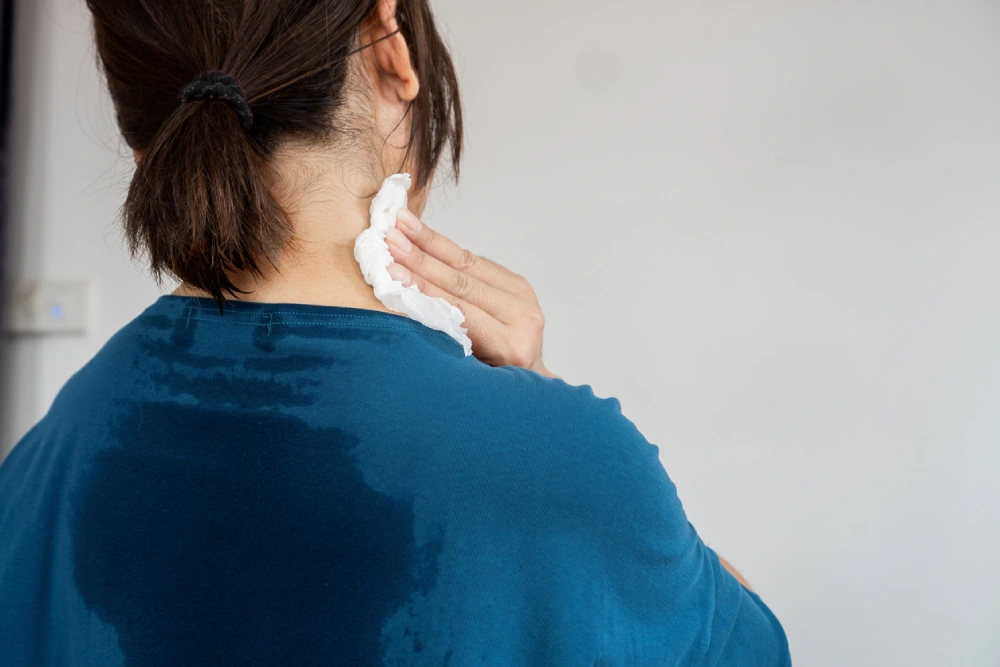
While pursuing medical treatment is crucial, developing coping strategies for daily life can significantly improve your experience with hyperhidrosis.
Practical Tips for Daily Management:
- Keep a small towel or absorbent cloths readily available
- Use foot powder and moisture-absorbing insoles for shoes
- Consider waterproof phone cases and laptop covers
- Plan activities during cooler parts of the day when possible
- Inform trusted friends or colleagues about your condition for support
Building Confidence:
- Remember that hyperhidrosis is a medical condition, not a character flaw
- Focus on your accomplishments and positive qualities
- Practice self-compassion when dealing with sweating episodes
- Consider counseling if anxiety about sweating becomes overwhelming
- Connect with others who understand your experience through support groups
Professional and Social Situations:
- Prepare for handshakes with a small towel or by keeping your hands cool
- Choose meeting locations with good air conditioning when possible
- Practice stress-reduction techniques before important events
- Have backup clothing available for unexpected situations
- Be honest with close friends and family about your condition
The Future of Hyperhidrosis Treatment
Research into hyperhidrosis treatment continues to advance, offering hope for even better options in the future:
Emerging Treatments:
- Radiofrequency ablation of sweat glands
- Ultrasound-based treatments similar to MiraDry for other body areas
- New topical medications with fewer side effects
- Gene therapy research for the underlying causes
- Improved surgical techniques with reduced compensatory sweating
Technology Advances:
- Better home iontophoresis devices
- Smartphone apps for tracking symptoms and treatments
- Telemedicine consultations for ongoing care
- Wearable sensors to monitor sweat patterns
Finding Hope and Taking Action
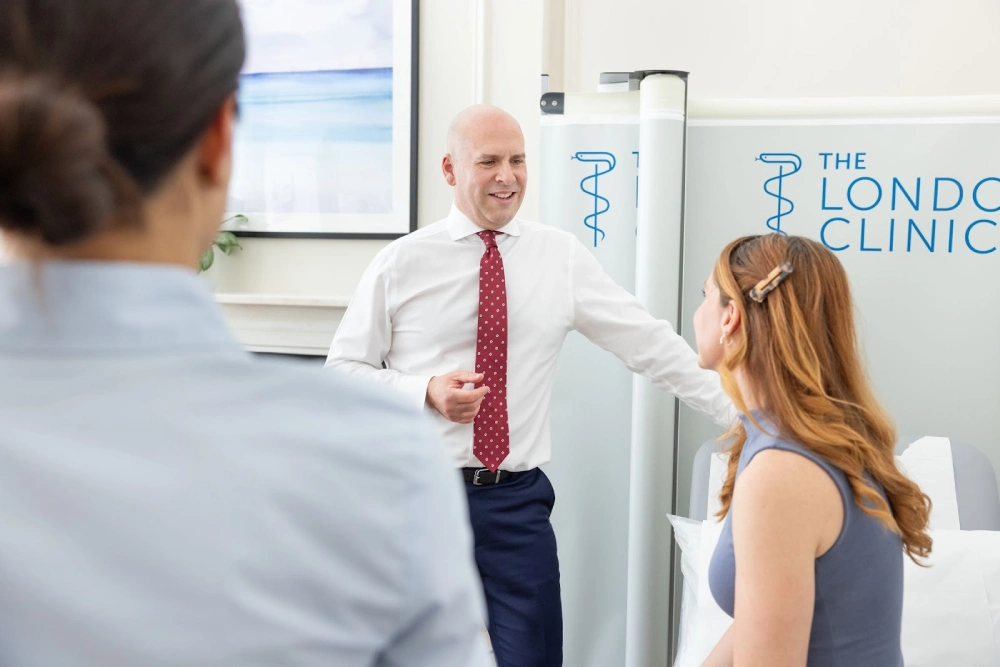
Living with hyperhidrosis can feel overwhelming, but remember that you have more options today than ever before. From simple antiperspirants to advanced surgical procedures like ETS, there’s likely a treatment approach that can provide significant relief and improve your quality of life.
The key is to work with healthcare providers who understand hyperhidrosis and can guide you through the available options. Don’t let embarrassment or frustration prevent you from seeking help – millions of people successfully manage their hyperhidrosis and go on to live full, confident lives.
Taking the First Step
If you’re ready to explore treatment options:
- Schedule a consultation with a dermatologist or specialist experienced in hyperhidrosis
- Keep a sweating diary to help your doctor understand your patterns
- Research treatment options and prepare questions for your appointment
- Consider the impact hyperhidrosis has on your life and what level of intervention feels appropriate
- Remember that finding the right treatment may take time and patience
Final Thoughts
Hyperhidrosis treatment has evolved dramatically over the past decade, and patients now have access to highly effective options ranging from conservative approaches to definitive surgical solutions like ETS. While the journey to finding the right treatment may require patience and persistence, the potential for significant improvement in your quality of life makes the effort worthwhile.
Remember that seeking treatment for hyperhidrosis is not about vanity or perfectionism – it’s about reclaiming your comfort, confidence, and freedom to live life on your terms. Whether you find relief through clinical antiperspirants, botulinum toxin injections, or surgical intervention, the goal is the same: helping you feel more comfortable in your own skin.
Take heart in knowing that hyperhidrosis research continues to advance, treatment options are continually improving, and healthcare providers are becoming increasingly knowledgeable about this condition. Your journey towards managing hyperhidrosis starts with a single step – reaching out for help. With today’s treatment options, many people are able to manage symptoms effectively and live more comfortably.
The path to managing hyperhidrosis may seem daunting, but thousands of patients have successfully found relief through the treatments outlined in this guide. Whether your solution lies in conservative management, advanced medical treatments, or surgical intervention like ETS, the important thing is to start the conversation with a qualified healthcare provider and begin your journey towards improved quality of life.
This information is for educational purposes only and should not replace professional medical advice. Always consult with a qualified healthcare provider before making decisions about hyperhidrosis treatment options.
FAQs
What is excessive sweating?
Excessive sweating, or hyperhidrosis, is a condition where the body produces more sweat than necessary to regulate temperature. It commonly affects the palms, underarms, face, and feet.
What causes excessive sweating?
There are two types of hyperhidrosis:
- Primary hyperhidrosis: No underlying medical cause, often hereditary, and affects specific areas like palms or underarms.
- Secondary hyperhidrosis: Caused by medical conditions (e.g., diabetes, thyroid issues) or medications and tends to affect the entire body.
When should I seek treatment for excessive sweating?
Seek medical advice if:
- Sweating interferes with daily activities.
- It causes emotional distress or embarrassment.
- Over-the-counter remedies are ineffective.
- Sweating is accompanied by other symptoms like weight loss or fever.
What are the treatment options for excessive sweating?
Treatment options include:
- Topical treatments: Prescription-strength antiperspirants.
- Medications: Oral medications to reduce sweat production.
- Botox injections: Temporarily blocks sweat glands in targeted areas.
- Iontophoresis: Uses electrical currents to reduce sweating in hands and feet.
- Surgical options: For severe cases, such as Endoscopic Thoracic Sympathectomy (ETS).
What is Endoscopic Thoracic Sympathectomy (ETS)?
ETS is a minimally invasive surgical procedure that interrupts the nerves responsible for excessive sweating. It is typically used for severe cases of primary hyperhidrosis affecting the palms, underarms, or face.
How long does recovery take after ETS?
Recovery is usually quick, with most patients resuming normal activities within a week. Some may experience mild chest discomfort, which subsides in a few days.